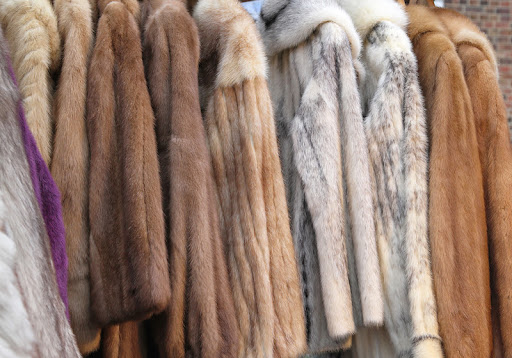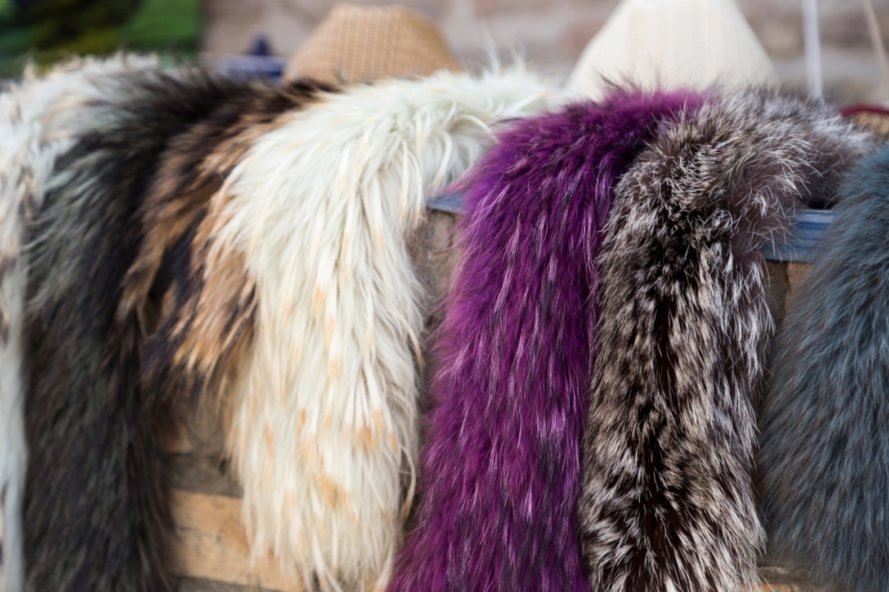The International Federation of Fur has created Furmark, a worldwide certification scheme that ensures natural fur meets “animal welfare and environmental criteria.” This is a campaign aiming at altering people’s perceptions about materials that haven’t always been popular in previous years.
“Furmark” is a new worldwide certification and traceability system for natural fur that ensures animal welfare and compliance with environmental regulations. The certification method guarantees that every stage of the manufacturing process adheres to stringent, internationally recognized standards.
Furmark combines the best independently-verified certification programs in response to customer requests for easy, recognizable, and worldwide certification – represented by a visible mark. With the fashion industry increasingly removing this material from its designs, altering the world’s perception of natural fur is a significant issue.
WelFur
WelFur is Europe’s fur farm inspection and certification program for mink, fox, and Finnraccoon. Third-party assessors conduct the assessments, and farms that fail to satisfy the stringent criteria are not included in the certification program.
WelFur is also intended to analyze and assess animal welfare standards on fur farms, and it may be used by farmers to enhance procedures and farm management. WelFur certification evaluates and ranks farms based on four guiding principles and 12 specific animal welfare criteria. There are 25 measures used to evaluate the wellbeing of foxes and 22 measurements used to assess the welfare of mink.
WelFur’s mission is to guarantee that animal welfare best practices are followed throughout the fur supply chain. The certification procedure is intended to offer an objective and accurate evaluation of animal welfare. It also seeks to enhance overall animal care by ensuring consumer transparency.
North American Farm-Raised

Since 1988, the United States has certified its farms with veterinarians and is constantly upgrading its requirements in response to scientific advancements and innovation. The farm-raised mink industries in the United States and Canada have a long history of collaboration. Both the United States and Canada want to promote excellent welfare practices and fulfill supply chain requirements by coordinating their welfare programs and related certification evaluations.
The parts in the standard standards for US and Canadian mink farms address a wide variety of issues, including farm management, housing, food and water, health, environmental quality, transportation, humane euthanasia, biosecurity, and animal husbandry.
NSF International, a globally recognized professional auditing firm, is doing third-party verification for the Canadian mink industry. Validus, an independent animal auditor organization, verifies the standard standards in the United States.
The Canadian code of practice for the care and handling of farm-raised foxes is divided into seven parts that explain the producer’s responsibilities: lodging and housing, biosecurity, food and water, health and welfare management, animal husbandry, humane euthanasia, and transportation. NSF International, a globally recognized professional auditing firm, is doing third-party verification of the Canadian fox industry.
North American Wild Fur
The new Wild Fur Certification Protocol helps to guarantee that population and environmental sustainability are important considerations when harvesting wild fur. It supplements the system of checks and balances in place at the municipal, state, regional, and provincial levels, as well as broad international accords.
Trappers in North America must get a trapping license and follow strict harvesting rules. Conservation officers visit trappers, perform regular field patrols, and check trap lines to monitor and enforce state, provincial, and territory trapping laws. Moreover, government authorities record, monitor, control, and check wild fur harvests and exports.
Canada has around 1,400 Wildlife Conservation or Enforcement Officers, whereas the United States has 8,500. It is their responsibility to implement all wildlife protection laws in North America. They operate full-time in the field and have the authority to prosecute lawbreakers and to personally enforce all hunting and trapping operations.
State, provincial, territorial, and federal wildlife management agencies, as well as border trade control authorities, enforce stringent licensing, permitting, and regulation of the fur trade. Every stage of the transaction is carefully regulated, from the trapper harvesting on the property to the purchasers, wholesale dealers, auction houses, importers, and exporters.
Swakara
Swakara is the name of a South West African breed of karakul (high-quality lambskin). A program for swakara producers has been established, which includes norms of practice and production and marketing requirements. Auditing and compliance are critical components of this process.
To supplement the execution of the Swakara Code of Practice Standards for the Production and Marketing of Pelts, specific rules for implementation that address problems such as auditing and compliance have been created. To acquire Swakara code of conduct membership, candidates must fill out a comprehensive form and questionnaire about a number of the main problems mentioned in the code of practice.
The Swakara board has expanded the amount of education and training for farmers in preparation for their participation in the Furmark program. It has also carefully examined problems of countryside management and predator control to ensure that they are wildlife-friendly. As a condition of Furmark, independent third-party audits were performed on a substantial percentage of Swakara farms in 2020.
Sable
Sable fur has been a highly prized commodity in the fur trade since the early Middle Ages, and it is in great demand among a variety of high fashion companies across the globe, with a species-specific certification scheme in place. The most current sable monitoring report released in 2020 included a plethora of fresh data and significant findings.

Notably, the report discovered: that the sable population in Russia is stable and will not be a cause for concern over the next monitoring period of 10 years; that current harvesting is done following production limits and quotas; that current harvesting methods comply with international humane trapping standards (AIHTS); and, most importantly, that the overall numbers of fur-bearing animals are increasing.
The sable monitoring study also discovered that quotas in certain Russian Federation component jurisdictions are presently underutilized. In the future, regions will conduct continuous year-round monitoring of local sable populations, and an independent evaluation of the traceability system for wild sable sold at auctions is being conducted.
Dressers and Dyers
Furmark-certified dressers and dyers meet three key criteria: the highest product safety requirements; government inspection of facilities to guarantee minimum emissions; and statements from the businesses themselves, holding them liable for any failure to maintain their promises.
Dressers and dyers from all around the globe banded together in April 2011 to strengthen the importance of their craft in the fur trade. As a consequence, the International Fur Dressers and Dyers Association was formed (IFDDA). In 2015, the IFDDA released its first-ever sustainability report.
The dressing is the process of preserving fur in its natural condition. Dyeing refers to the process of altering the color of the fur’s hair. Both of these procedures need the use of industrial and chemical techniques. As a result, the fur industry has invested a significant amount of time and effort collaborating with these trained experts to discover the best long-term solutions for the consumer, the product, and the environment.


